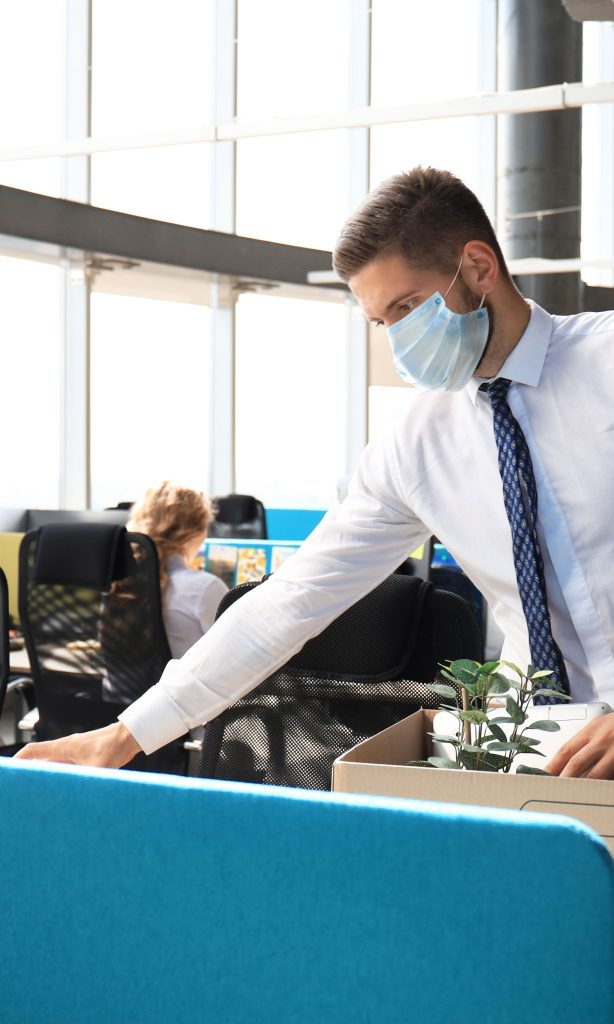
CDC Guidance: Working After Potential Exposure
Apr 13, 2020The Centers for Disease Control and Prevention (CDC) issued recent interim guidance permitting “critical infrastructure” asymptomatic workers who may have been exposed to COVID-19 to continue working, provided additional precautions are taken by the employer. However, California employers should be mindful that this guidance may contradict state or county public health orders.
The interim guidance applies to critical infrastructure workers, including law enforcement, 911 call center employees, hazardous materials responders, janitorial and custodial staff, food and agriculture, critical manufacturing, informational technology, transportation, energy, and government facilities. The interim guidance applies when an employee has had a potential exposure. “A potential exposure means being a household contact or having close contact within 6 feet of an individual with confirmed or suspected COVID-19. The timeframe for having contact with an individual includes the period of time of 48 hours before the individual became symptomatic.”
Under the interim guidance, asymptomatic employees may report to work, but should follow the following five steps:
- Employers should pre-screen the employee’s temperature and assess symptoms, ideally prior to the employee entering the facility;
- The employee should self-monitor “under the supervision of the employer’s occupational health program;”
- The employee should wear a face mask at all times for 14 days from last exposure (which can be issued by the employer or supplied by the employee, but approved by the employer);
- Work duties permitting, the employee should maintain six feet and practice social distancing at work; and
- All work areas should be cleaned and disinfected routinely.
If the employee becomes sick, they should be sent home immediately, and the workspace should be cleaned and disinfected. The employee should remain home in accordance with directives from the employee’s health care provider, state or county orders, and/or CDC guidance.
The CDC also offered the following additional guidance:
- Employees should not share headsets or other objects that are near the nose or mouth;
- Employers should clean commonly touched surfaces more frequently;
- Employers and employees should pilot test the use of face masks to ensure they do not interfere with work;
- Employers should work to increase air exchanges in a room; and
- Employees should physically distance when taking breaks together, should try to stagger breaks, and avoid congregating in the break room or sharing food or utensils.
This new guidance is a significant shift from the CDC’s existing guidance that recommends asymptomatic individuals who have been potentially exposed to COVID-19 (such as being in close contact for an extended period of time or living in the same household) should stay home for 14 days after the last exposure.
Employers should be mindful that this CDC guidance is not mandatory. Further, employers must be mindful of the restrictions that are mandatory under state and county public health orders, which may contradict the CDC guidance.
For instance, the following counties (as well as many others) have standing isolation orders that directly contradict the CDC guidance and order individuals who have been diagnosed or potentially exposed to COVID-19 to isolate in their place of isolation and not to enter any other public or private place, except to receive necessary medical care:
- The County of Alameda Public Health Department’s April 3, 2020 advisory memo instructs health care clinicians to disseminate ACPHD isolation and quarantine orders to all persons diagnosed with suspected or confirmed COVID-19 and to persons with close contact of suspected or confirmed cases. Further, the quarantine order instructs, all individuals who have been diagnosed with or are likely to have COVID-19 to isolate themselves and to follow all instructions in the Health Officer’s order.
- The County of Los Angeles Department of Public Health’s April 1, 2020 Home Isolation Order requires all individuals who have been diagnosed with or who likely have COVID-19 to immediately isolate in their home or another residence until: (a) at least 3 days (72 hours) have passed since recovery, defined as resolution of fever without use of fever-reducing medications and improvement of respiratory symptoms (e.g., cough, shortness of breath) AND (b) at least 7 days since symptoms first appeared.
- The County of San Diego Health and Human Services Agency’s April 7, 2020 Order of Isolation of All Persons With or Likely to have COVID-19 requires individuals to immediately isolate for one or more of the following reasons: (a) a positive lab test for COVID-19; or (b) signs and symptoms that are consistent with COVID-19 (e.g. fever, cough, shortness of breath or trouble breathing; or (c) a physician has informed the individual that they are likely to have COVID-19. The order provides that isolation shall continue until at least 3 days (72 hours) have passed since recovery, defined as resolution of fever without use of fever-reducing medications and improvements of respiratory symptoms (e.g. cough and shortness of breath); and at least 7 days since symptoms first appeared.


